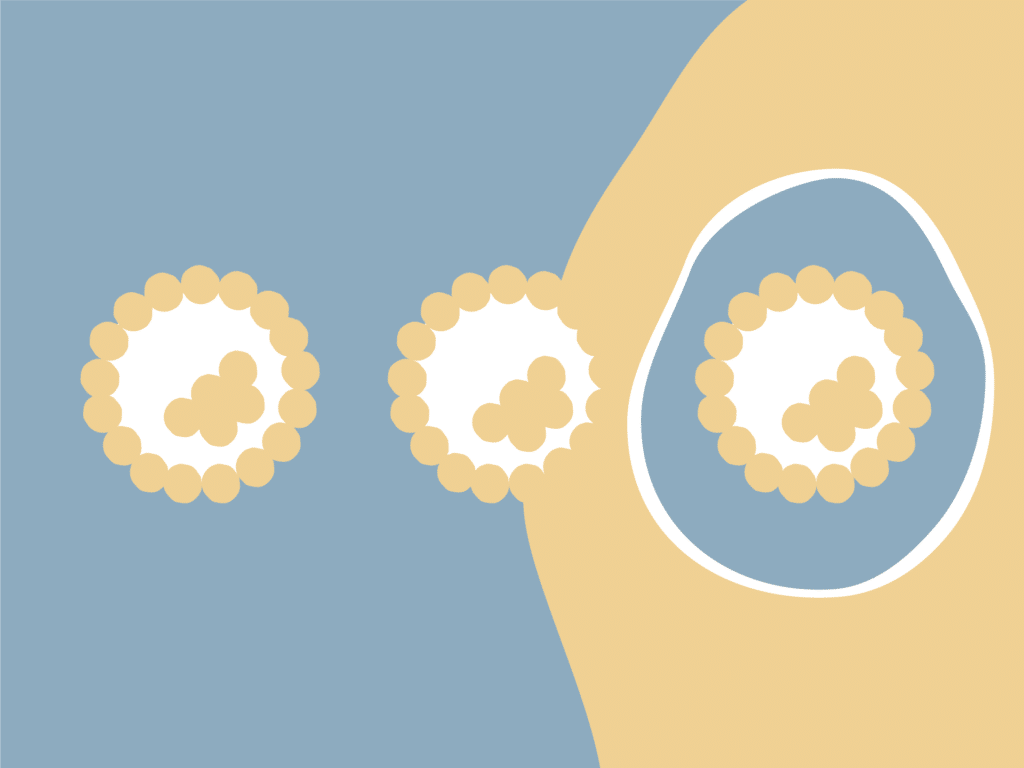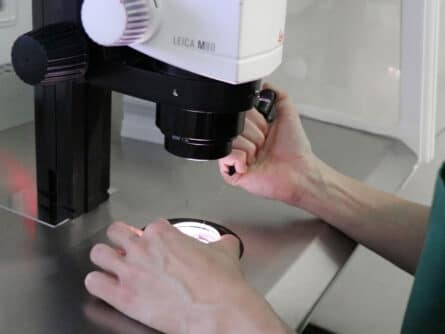What is embryo adoption?
Embryo adoption is a treatment in which the embryos that are transferred to the recipient have been donated by another woman or couple. The donated embryos come from patients who have already completed their family planning project and have decided to donate the embryos they had remaining from previous Assisted Reproduction Treatment. These embryos, according to Spanish legislation, can be donated to other women or couples for reproductive purposes.

Stages of treatment

Endometrial preparation
The endometrium is prepared for the embryo transfer with the help of oestrogens which you’ll start taking when you get your period. At least two ultrasound scans will be necessary. This stage usually lasts 12-14 days.
Once the endometrial lining reaches the correct thickness, the doctor will prescribe a second hormone (progesterone), which prepares the patient’s body for the embryo transfer.

Embryo thawing
Our embryologists will be the ones to decide which embryos shall be used for the embryo transfer. The blood groups of the donating couple will be compatible with the recipient’s. However, if you would like for the donors to have physical characteristics similar to your own, then the most appropriate treatment would be double gamete (egg and sperm) donation.

Transfer of donated embryos
The embryo transfer involves depositing the embryos in the uterus using a very thin catheter which is guided through the cervix. This procedure is painless. According to Spanish law, three embryos is the maximum a patient can transfer at a time.
We advise patients to stay relaxed and to take it easy on the day of embryo transfer and the following day as well. After this the patient can resume her usual day to day activities. You should avoid strenuous physical activity and competitive sport for the two weeks following your transfer. We normally prescribe progesterone treatment which the patient will start taking on the day of the donation. We also recommend taking folic acid.
What will my treatment be like if I don’t live in Spain?
We know that when a woman decides she wants to become a mother she is making one of the most important decisions of her life. Because the desire to be a mother is one that crosses all races, languages and borders, our International Department wants to be by your side when you need it most in order to make your journey as pleasant as possible. Our International Department is made up of native coordinators who will accompany you before, during and after your pregnancy.
We’ll assign you a doctor and a native coordinator
Who will assist you in your native language from the moment you first contact us.
You’ll only need to make one trip to Spain
Which you’ll be able to arrange far enough in advance so that you can book hotels, flights and time off from work. The rest of your appointments can be carried out remotely: by video-call, phone or email.
1st visit is cost-free
If you’d like to meet us in person and undergo all of the preliminary testing with us.
Preliminary testing and ultrasounds during treatment
This can also be done in your country with your gynaecologist. We’ll send you all the necessary instructions.
We’ll adapt to you.
With the necessary resources to get started once you’re ready. No waiting times.
Success rates
At Ginemed our success rates are around 77% for double embryo transfers carried out on Day +5 (blastocyst stage), confirmed by a positive Beta HCG result. All transfers are performed with Day +5 embryos (blastocyst stage), as success rates are 20% higher than with Day +3 embryos.
Results do not depend on the age of the recipient (though they do depend on the age of the woman who the eggs came from), and, at any rate, will vary based on the number of embryos transferred. Success rates are slightly lower than with IVF cycles due to the fact that the top quality embryos were transferred in the fresh cycle, so the donated embryos are considered ‘second choice’.
Pregnancy rates by Beta HCG
First fertility visit is free
Request your first appointment cost-free at the clinic closest to you
Frequently asked questions about embryo adoption
Embryo adoption is recommended in the following cases:
- Poor sperm and egg quality. In cases of diminished ovarian reserve, ovarian failure or premature menopause accompanied by severe male factor infertility such as azoospermia.
- Absence of a male partner. Females without a male partner who have been diagnosed with diminished ovarian reserve, ovarian failure or premature menopause.
- Repeated failed cycles of In Vitro Fertilisation with own eggs and sperm. When a patient has transferred at least four embryos over the course of three embryo transfers, spanning two different IVF cycles and at least one of them in blastocyst stage, but no pregnancy has been achieved.
- Genetic abnormalities. When the patients have a hereditary disease meaning that treatment with their own eggs and sperm is discouraged, in addition to ovarian failure or severe male factor infertility.
Although the final decision will always depend on each patient’s needs and personal circumstances, egg and sperm (double) donation offers better results than embryo adoption as the age of the female who provided the eggs is going to be the most important determining factor in terms of achieving a pregnancy. With egg donation treatment, the egg donor is generally going to be younger than a woman who underwent IVF and donated her remaining embryos to the embryo adoption program.
Yes, because we’ll be able to prepare your endometrium in a medicated cycle. By taking medication, you’ll receive the oestrogen and progesterone support that are needed to make the endometrium receptive so that an embryo can implant and develop, leading to a viable pregnancy.
No. Gamete donation is anonymous in Spain and, consequently, the donation of embryos created from the egg and sperm of another couple is also anonymous.
The embryos come from patients who have met the basic criteria needed to undergo assisted reproduction treatment: good general health, negative results for sexually transmitted diseases, and, oftentimes, a normal karyotype which confirms 23 pairs of chromosomes of correct number and structure.
Additionally, the female who the eggs originated from cannot have been older than 35 at the time the embryos were frozen, and the male who provided the sperm cannot have been older than 50 at the time the embryos were frozen.
The laboratory is in charge of selecting the embryos to be used depending on their quality and day of development when they were cryopreserved.
